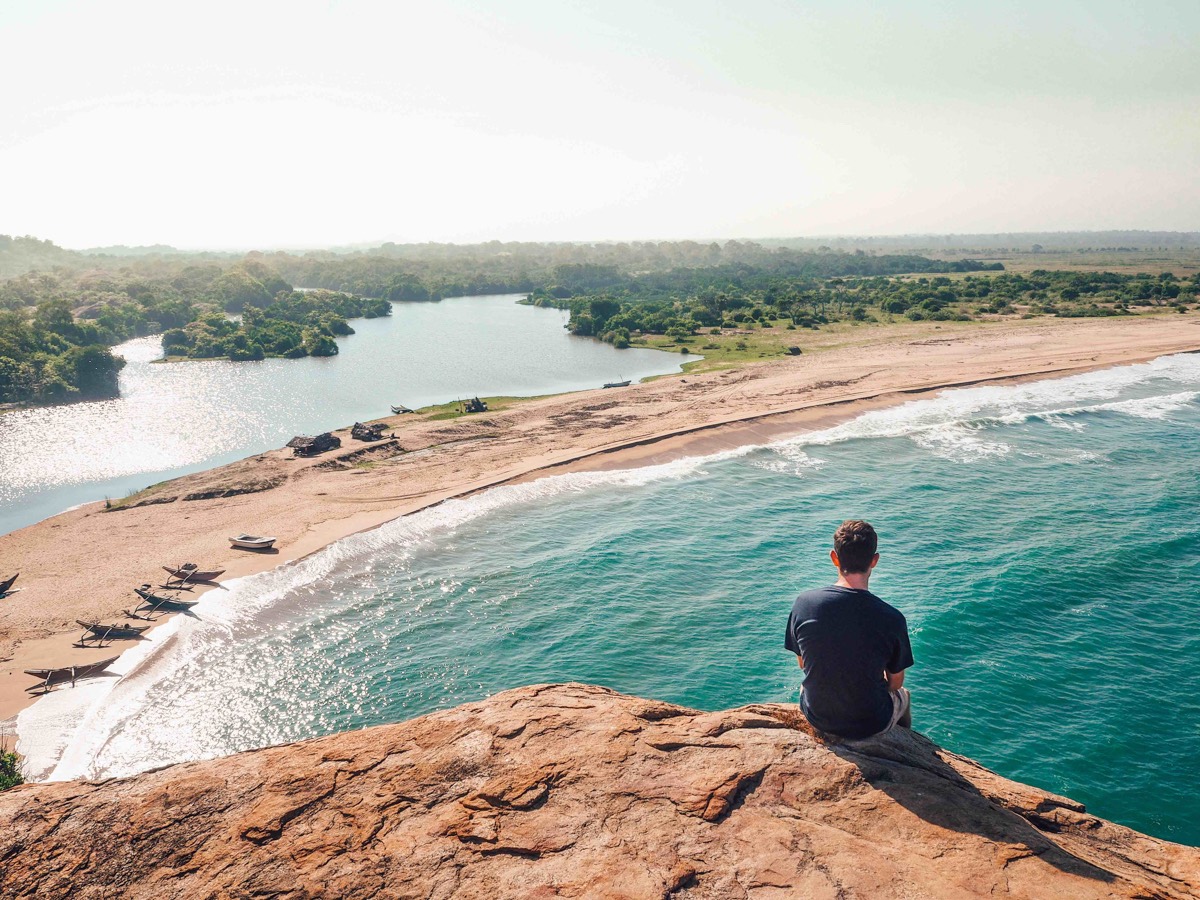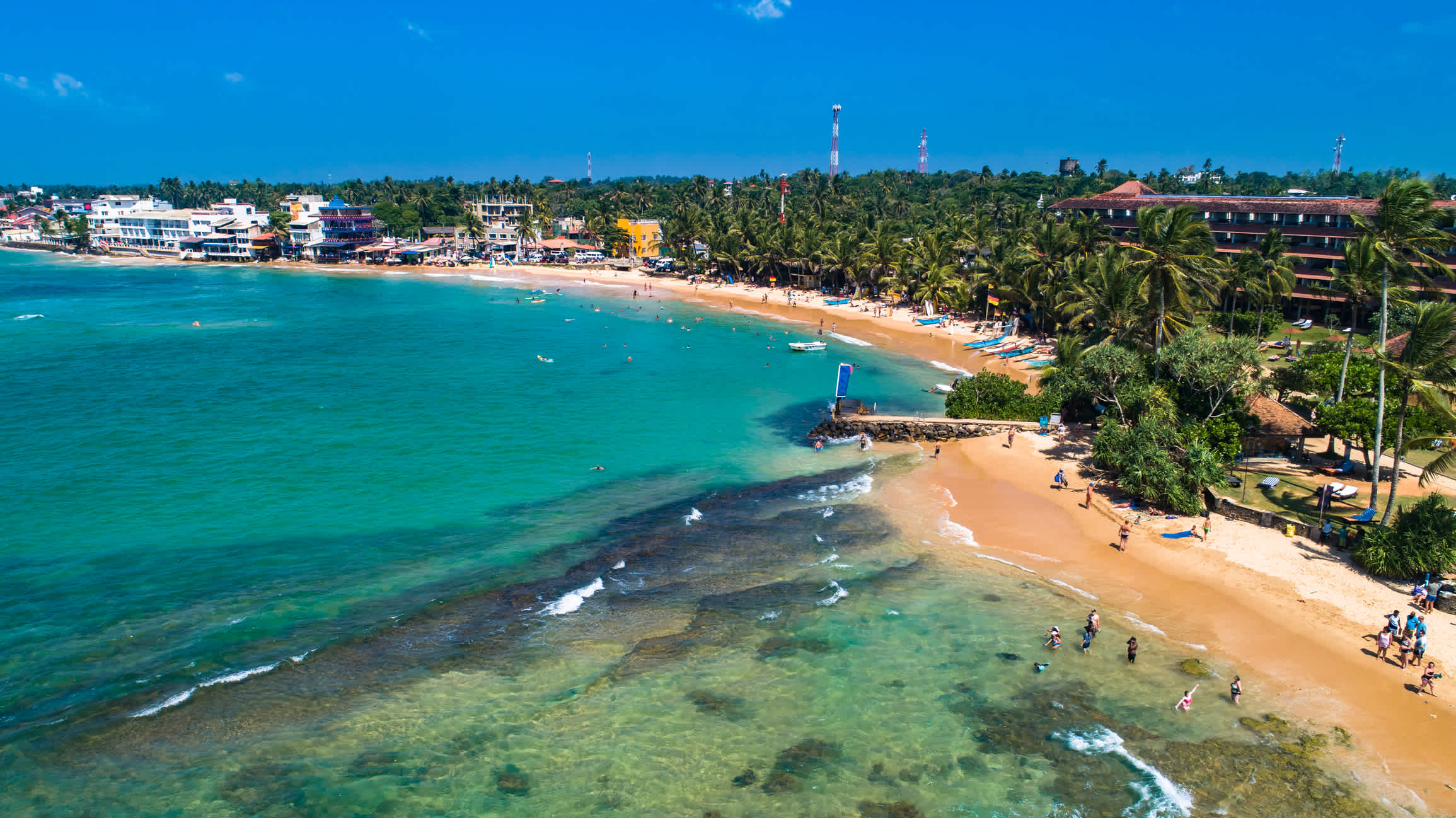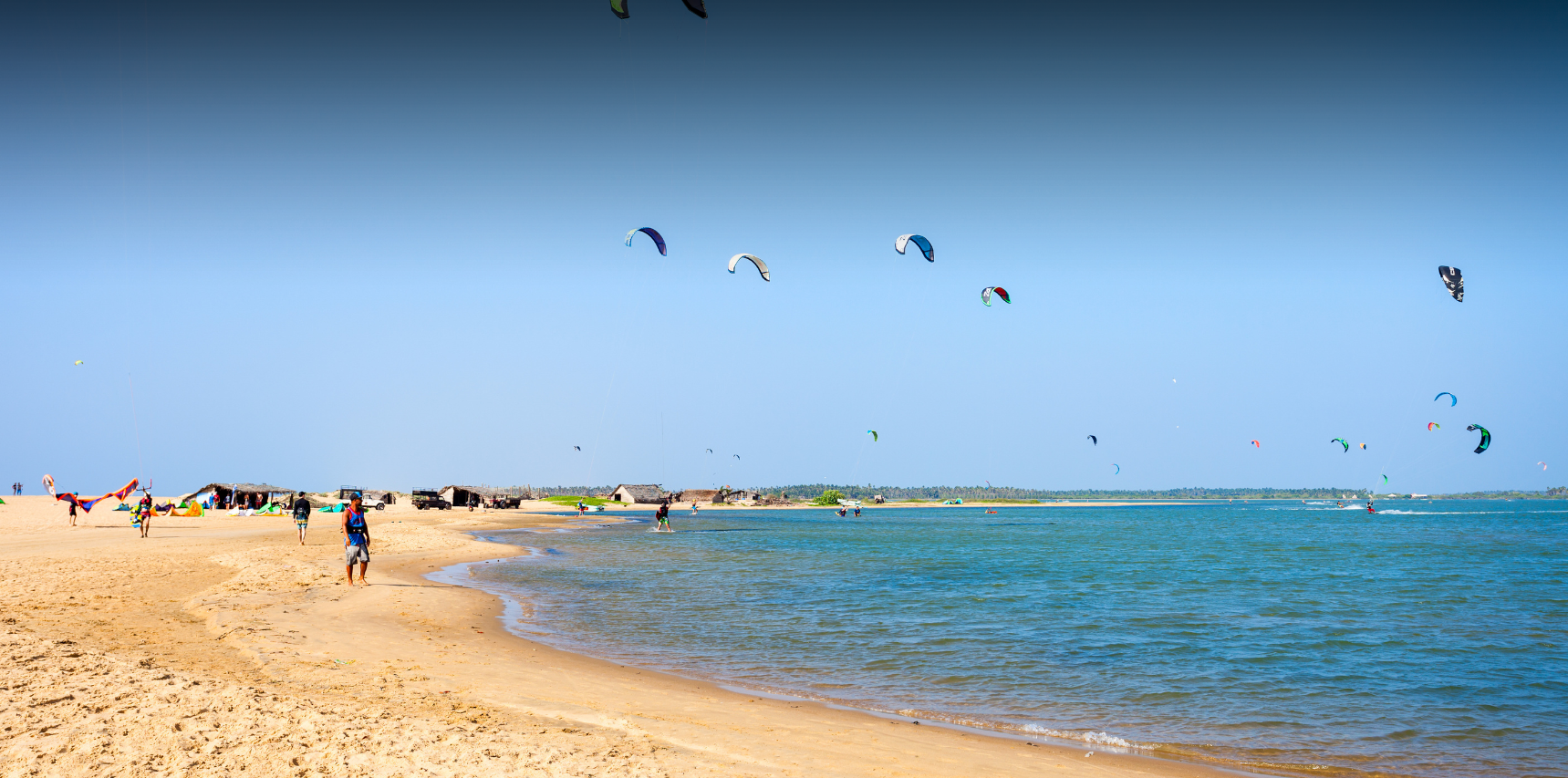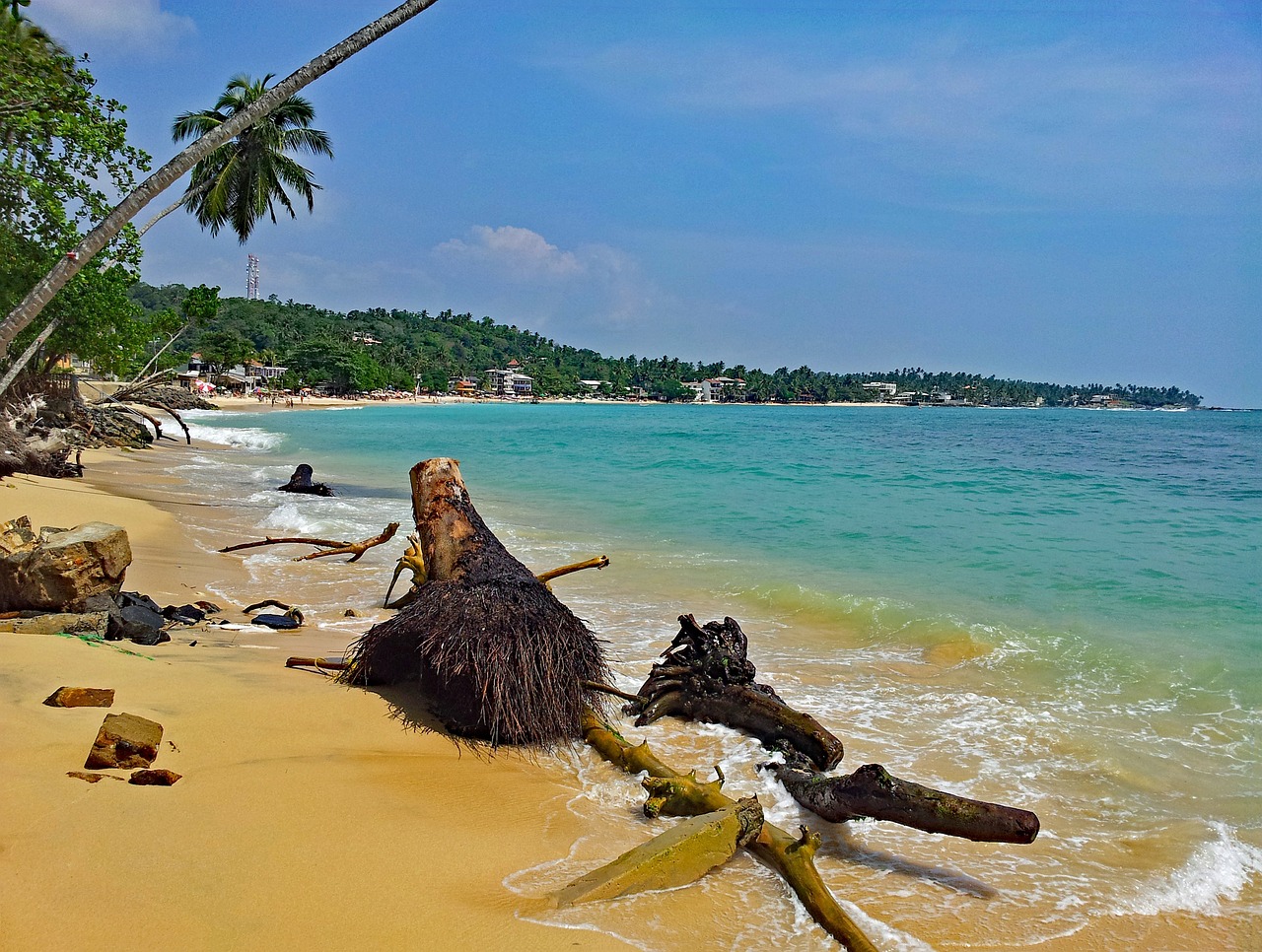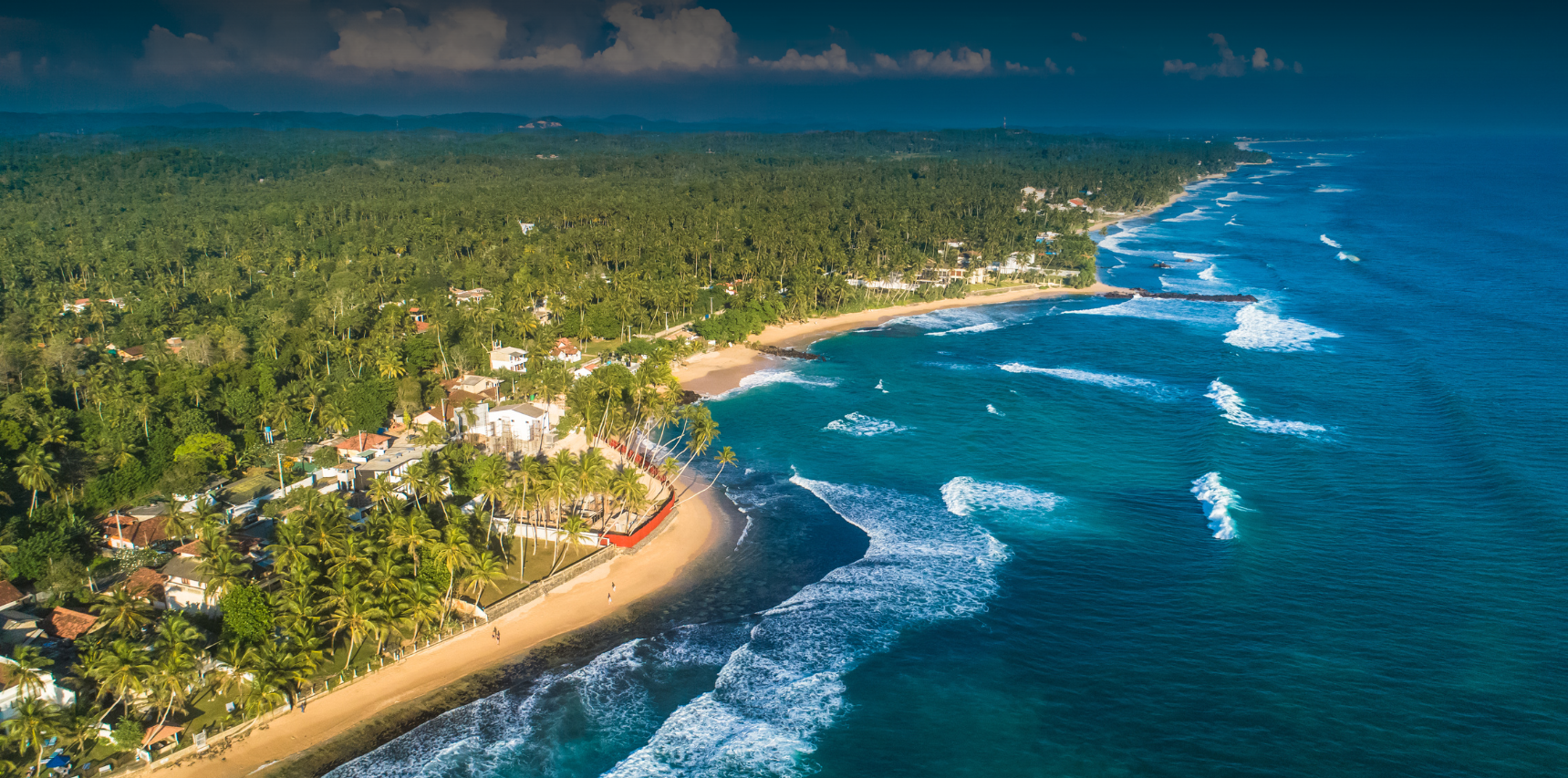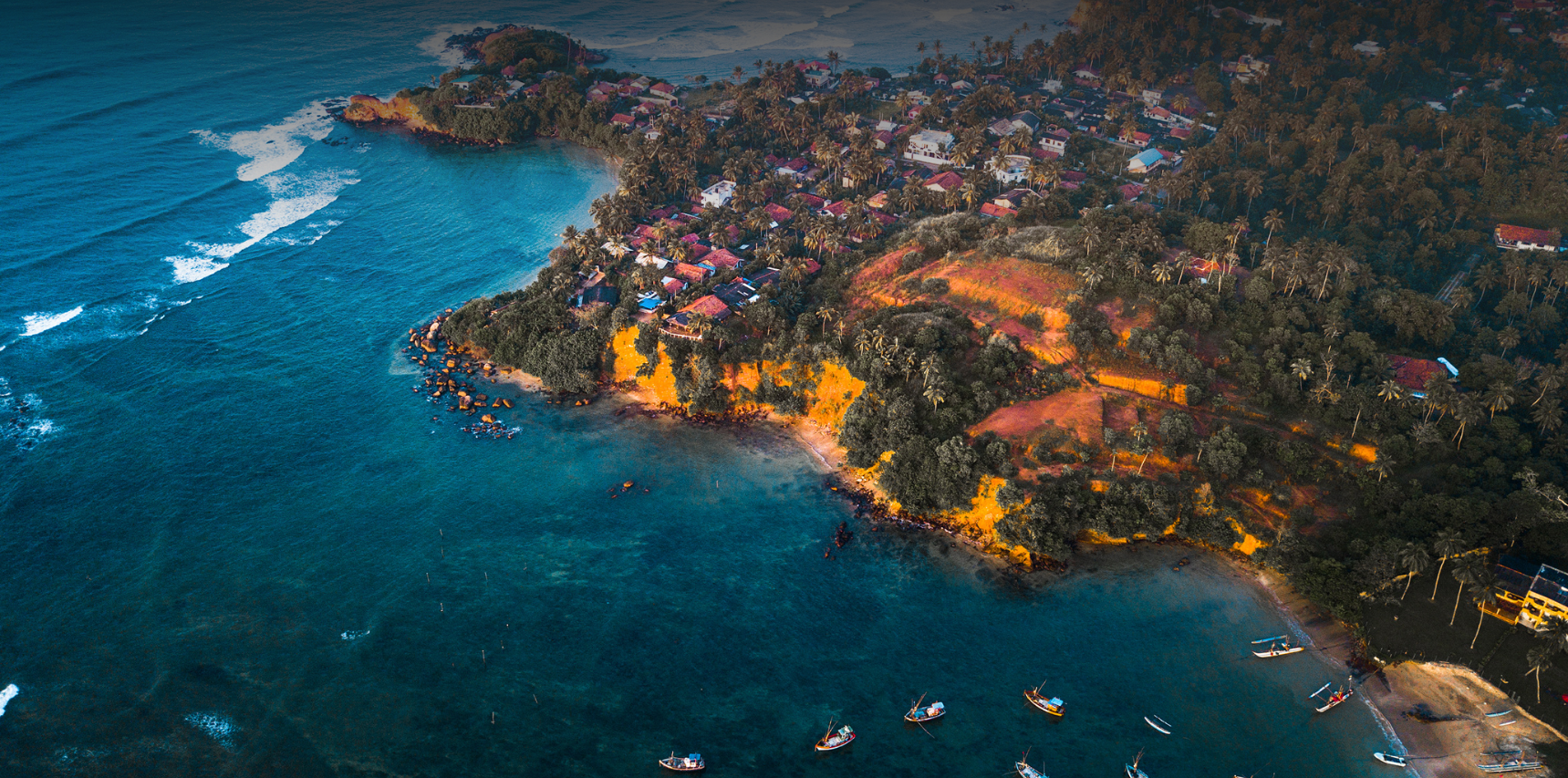Frequently Asked Question
You’ll need to apply for a visa online through the ETA (Electronic Travel Authorisation) website. This can be done from 90 days prior to your departure and costs $50 for an individual online application, which will be valid for 30 days. You should receive a response to your application within a couple of days.
January - April (Entire Country)
Mid-July - September (Entire Country)
February - September (North and East)
Sri Lanka offers a wide range of outdoor activities and adventure sports. Here are some popular activities:
- Surfing
- Sri Lanka’s coastline has surf spots for both beginners and experienced surfers. Arugam Bay on the east coast and Hikkaduwa on the west coast are well known for their surf breaks
- Scuba Diving and Snorkeling
- Sri Lanka is home to vibrant coral reefs, Ship Wrecks and diverse marine life. Hikkaduwa, Trincomalee (Pigeon Island), and Pasikudah are popular destinations for scuba diving and snorkeling.
- Whale Watching
- Mirissa, on the south coast, is a popular spot for whale watching. Visitors can go on boat tours to spot blue whales, sperm whales, and dolphins in their natural habitat. Season : November to April.
In the east coast, Trincomalee, visitors can spot species such as Blue Whales, Sperm Whales, and Fin Whales, as well as several types of dolphin. Season : March to September.
- Trekking and Hiking
- Sri Lanka’s terrain has many opportunities for trekkers and hikers. Popular hiking trails include
- Horton Plains circular trail
- Adam’s Peak (06 routes)
- Knuckles Mountain Range
- Ella Rock
- Pekoe Trail (22 stages)
- Devil’s Staircase
- Sinharaja Rainforest
- Upper Diyaluma
- White Water Rafting
- The Kelani River in Kitulgala is famous for white-water rafting.
- Wildlife Safaris
- Sri Lanka is home to many national parks and wildlife reserves. Visitors can go on safaris to see elephants, leopards, sloth bears, and a variety of bird species. (e.g., Yala National Park, Udawalawe National Park, and Minneriya National Park.)
- Kiteboarding and Windsurfing
- Kalpitiya on the west coast is well known for kiteboarding and windsurfing. The area offers consistent wind conditions and shallow lagoons.
- Zip-lining and Canopy Tours
- Several places across the country offer zip-lining and canopy tours. (e.g., Ella, Sembuwatta Lake)
- Waterfall Abseiling
- Waterfall abseiling is available by adventure tour operators in Ella and Kitulgala.
- ATV rides
- ATV (Quad bike) tours are available in Colombo Port City, and Ella.
Yes, Sri Lankans are generally known for their friendly and hospitable nature. They are often warm, welcoming, and helpful towards tourists. Sri Lankans take pride in their culture of hospitality. Also, locals go out of their way to make visitors feel comfortable and at home. Interacting with locals can be a wonderful way to immerse yourself in the local culture and gain insights into the country.
The best area to stay in Sri Lanka depends on your preferences and the type of experience you are looking for. Some popular bases that offer a range of accommodations and attractions include:
- Colombo
- Sri Lanka’s capital city, Colombo, offers a blend of modern and colonial charm. It is a great base for exploring the city’s vibrant nightlife, markets, posh restaurants, and historical sites.
- Kandy
- Located in the hill country, Kandy is known for its lush landscapes and cultural heritage. The city is home to the iconic Temple of the Tooth. Also, you can visit Perdeniya Gardens and tea plantations. Kandy is the second-most visited place in Sri Lanka.
- Galle
- Galle is a historic coastal town that showcases Dutch colonial architecture and a charming old fort area. It also has beautiful beaches (Unawatuna), boutique hotels, and a lively atmosphere with cafes, galleries, and shops. Based on Galle you can have easy access to Mirissa, Weligama and Hikkaduwa areas.
- Mirissa
- For those seeking beach relaxation and engaging in water adventures like snorkeling and whale-watching, Mirissa stands out as a favored destination. This coastal town emanates a serene ambiance and boasts breathtaking sunsets. However, once 6.30 pm arrives, its atmosphere transforms, making it one of the liveliest and most vibrant areas in the country
- Nuwara Eliya
- Dubbed ‘Little England’, Nuwaya Eliya is a chilling colonial town bundled with tea-covered verdant hills, waterfalls, and fancy hotels. A welcome change to the humid coastal towns. From N’Eliya you can explore the Adams Peak, Hatton, Mandaram Nuwara, Horton Plains and Ella.
There are several notable places to visit in Sri Lanka. Here are some top recommendations:
- Sigiriya
- Rising from the central plains, Sigiriya is a stunning rock fortress and one of Sri Lanka’s most iconic sights. Climb to the top and explore the ancient ruins while enjoying panoramic views. Sigiriya is the most visited attraction in Sri Lanka.
- Kandy
- Located in the hill country, Kandy is well known for its scenic beauty and cultural significance. Visit the Temple of the Tooth, explore the Royal Botanical Gardens, and enjoy a traditional Kandyan dance performance. Kandy is the base for Hanthana and Knuckles Range hikes.
- Galle
- Explore the historical city of Galle. Witness its well-preserved Dutch fort, colonial architecture, and charming streets. Walk along the fort walls, visit the Maritime Museum, and wander through the narrow alleys of the old town.
- Nuwara Eliya
- Nestled in the mountains, Nuwara Eliya is often referred to as “Little England” due to its cool climate and colonial-era charm. Explore tea plantations, visit Horton Plains National Park, and enjoy water activities on Gregory Lake.
- Yala National Park
- Embark on a safari adventure in Yala National Park, famous for its population of leopards. Explore the park’s diverse wildlife, including elephants, crocodiles, and various bird species.
- Ella
- Situated in the hill country, Ella offers breathtaking views of tea plantations and lush green landscapes. Hike to the famous Ella Rock, visit the Nine Arch Bridge, and explore the stunning Ravana Falls.
- Anuradhapura
- Discover the ancient city of Anuradhapura, a UNESCO World Heritage Site and former capital of Sri Lanka. Explore the ruins, visit sacred temples, and witness the sacred Bodhi tree, believed to be the oldest recorded tree in the world.
- Trincomalee
- Located in the east cost this lesser visited beach town can offer you pristene beaches, historical sites, natural wonders, and opportunities for wildlife encounters, Trincomalee offers a unique and memorable experience for every traveler. Whether you seek relaxation, cultural exploration, or outdoor adventure.
When packing for a trip to Sri Lanka, it’s important to consider the warm and humid weather. Lightweight clothing made of breathable fabrics is recommended, along with comfortable walking shoes. Don’t forget to pack a swimsuit if you plan on visiting the beaches or for a cooling dip in the hotel pools.
Packing for Sri Lanka depends a lot on the season that you are travelling in. In the spring and summer, light cotton clothes are a good idea. However, if you are planning a trip to the mountains you will need to bring some warm clothes because the temperature – especially above 2000 meters – can get quite cold.
It is worth noting that when you visit religious buildings, neat clothing is essential and in the Buddhist and Hindu temples, you must not wear any hats or headwear. Also do bear in mind that you must have knees and shoulders covered so it’s a good idea to have light scarves and sarongs to throw on quickly when visiting temples.
We know heading off on holiday is always a little bit stressful, especially on the day you leave, so we would advise doing these things before you depart:
- Check you have all your necessary documentation, including your passport!
- Take a photo of your documents and email it to yourself and travelling partners. Having a copy on your phone always comes in handy too.
- Ensure you have all your chargers and converters for any phones, cameras, tablets you are taking. A portable battery pack is a handy item to have in your hand luggage.
- Take snacks and a big bottle of water for your flight.
- Get to the airport with plenty of time to spare, we advise arriving 3 hours prior to your flight departure.
- Pack a change of clothes in your hand luggage and take a photo of your checked bag in case it goes missing en route.
- Sit back and relax knowing we have your holiday sorted!
The native language of Sri Lanka is Sinhala and it is spoken by around 70% of the population, with the remainder favouring the Singaporean language of Tamil. English is a second language in Sri Lanka and is widely used for official and commercial purposes, but locals are often keen to test their English out on you.
A melting pot of cuisine is one of the many benefits of a varied culture, and Sri Lanka has great food by the plateful! A dish not to be missed is the Sri Lankan Hopper which is a thin, crepe-like batter infused with coconut milk and spices that is then formed into a bowl shape to hold fried eggs. It’s a truly versatile dish that’s served as breakfast, a midday snack or even as a hangover cure! If you are looking for a more gourmet treat and love crab, then the ‘ Ministry of Crab’, opened by two former cricket players in a beautiful old Dutch hospital in Colombo, is a must. The restaurant serves sweet, succulent and spicy Sri Lankan crab and was recently voted one of Asia’s top 50 restaurants.
What do you need after a heavy meal? A cup of tea! Fortunately, you are in the homeland of arguably the best tea in the world – Ceylon Tea. Ceylon tea was first produced in 1867 by British-born James Taylor on his Tea Estate of Loolecondera on the hilly outskirts of Kandy. This delicate and aromatic tea is now one of Sri Lanka’s top exports and over 25 different grades of Ceylon tea are produced at plantations across the island.
Sri Lanka is a country of unique and diverse culture, with a fascinating and, at times, turbulent history. The country’s cuisine and music have been significantly influenced by Southern India and Sri Lanka’s colonial history is evidenced in its tea industries, as well as the popular sport of cricket.
Sri Lankan culture is also heavily influenced by the heritage of Theravada Buddhism and has one of the oldest living Buddhist traditions in the world. Here, about 70% of the islanders practise Theravada Buddhism and over 15 thousand monks devote their lives to serving and preaching Buddha’s teachings. The influence and deference to Buddha can be seen in the numerous ancient temples and statues, some of which are spectacularly carved into the mountainside.
Sri Lanka is famous for the tranquillity and spiritual richness of its southern Hill Country, where Ella reveals breathtaking landscapes like Ravana Falls and Ella's Rock. Experience the serenity of Kandy's Temple of the Tooth, a sacred and spiritual haven.
Anuradhapura – US$ 25 – £19
• Polonnaurwa – US$ 25 – £19
• Sigiriya – US$ 30 – £23
• Aukana – Rs. 1000 (Approx. US$ 8) – £6
• Dambulla Rock Cave Temple – Rs. 1,500 (Approx. US$ 12) – £9
• Cultural Show in Kandy – Rs. 1,000 (Approx US$ 8) – £6
• Dalada Maligawa – Rs. 1,500 (Approx US$ 12) – £9
• Royal Botanical Garden – Rs 1,500 (Approx. US$ 12) – £9
• Horton Plains Park – US$ 15 per person + Service charge of US$ 8 in total + VAT 16% – £20
• Udawalawe National Park – US$ 15 per person + Service charge of US$ 8 in total amount + VAT 16% – £20
• Kataragama Temple – No Fees (A donation is appreciated)
• Turtle Hatchery – Rs. 250 per person (Approx. US$ 2) – £1.5
• Colombo Museum – Rs. 800 per person (Approx. US$ 6) – £4.5
• Sinharaja – Entrance fee $10 & Naturalist fee $10 – £17
• Elephant Transit home- Rs. 500 per person (Approx. US$ 4.5) – £3.5
• Mirissa – Whale watching permit fee – US$ 18 per person – £14
Sri Lanka is generally a safe country to visit but there has been some political issues in recent years. Currently, the security situation in Sri Lanka has improved significantly, and most tourist areas are considered safe. However, it is always advisable to exercise caution and be aware of your surroundings while traveling. It is also recommended to stay updated on the latest travel advisories and follow the guidance of local authorities.
The Sri Lankan rupee comes in denominations up to 5,000, so it’s worth carrying change for those smaller purchases. You can exchange money in almost every hotel, however we suggest exchanging your money in an authorised bank to avoid higher rates.
Sri Lanka is a popular destination for families due to its beautiful beaches, incredible wildlife, good food, and hospitality. There are many kid-friendly attractions and activities to experience. Hotels that cater to the needs of families as well. Sri Lanka offers a wide range of activities for kids.
When traveling with toddlers, make sure to get diapers and formula in major towns where supermarkets are available. Also, the kids should be vaccinated for rabies since there are many stray dogs around. Pack your mosquito repellents as well, since dengue is abundant. Consult with your hotel to confirm that they are baby- and child-friendly and can accommodate your special requests.
A few things to do with kids
- Boat trips
- Whale and Dolphin watching
- Seeing elephants on a wildlife safari in Yala or Udawalawe
- Visiting a sea turtle hatchery
- Visiting the Udawalwe Elephant transit home
- Discover the tea estates in Nuwara Eliya
- Visit Galle Fort
- Snorkeling in Pigeon Island
Since Sri Lanka is a small country, it makes it easier for kids as there is less time on the road.
In Sri Lanka waiters, porters, drivers and guides will expect a tip. For housekeeping around R20 per day or R100 per week is standard. Porters and bellboys in the hotels count on around R50 per piece of luggage. The better restaurants usually add 10% service to the bill. Your driver during your trip will expect a tip of $5 per day and you can give this at the end of your trip, although this amount is of course at your discretion.
Sri Lanka has long been known as an affordable destination, on par with most Asian countries in terms of budget. The island is always packed with backpackers and budget travellers taking advantage of the great accommodation options and low cost of living.
Explore the Cultural TriangleVisit ancient cities like Sigiriya, Polonnaruwa, and Anuradhapura. You can witness archaeological treasures, intricate cave temples, and ancient ruins.Discover Tea PlantationsExplore the beautiful tea fields in Sri Lanka’s hill country. You can witness the tea-making process, enjoy a cup of Ceylon tea, and admire the scenic landscapes. Tea plantations offer guided tours which demonstrate tea manufacturing process.Safari AdventuresGo on a wildlife safari in one of Sri Lanka’s national parks. Yala, Udawalawe, Minneriya, or Wilpattu are the most visited NPs. Where you can spot elephants, leopards, sloth bears, and a variety of bird species.BeachesRelax and enjoy Sri Lanka’s picturesque coastline. Popular beach destinations include Unawatuna, Mirissa, Weligama, Bentota, Trincomalee and Arugam Bay.Visit Buddhist TemplesSri Lanka is well known for its Buddhist heritage. You can explore many alluring temples, such as the Temple of the Tooth in Kandy, Dambulla Cave Temple, and Anurdhapura.Train RidesTake a scenic train ride through the lush green landscapes of Sri Lanka, particularly the train journey from Kandy to Ella. It offers breathtaking views of tea plantations, waterfalls, and mist-covered mountains.Wildlife Conservation ProjectsEngage in responsible tourism by participating in wildlife conservation projects. Such as the Kosgoda turtle conservation project or the Udawalawe elephant transit home.Indulge in Local CuisineSample Sri Lankan cuisine, known for its rich flavors and spices. Don’t miss dishes like hoppers, curry, kottu roti, and seafood specialties.Ayurvedic TreatmentsExperience traditional Ayurvedic treatments and wellness therapies in Sri Lanka. Which can help rejuvenate and relax your mind and body.Cultural FestivalsImmerse yourself in Sri Lanka’s vibrant culture by attending Kandy Esala Perahera or Vesak. You can witness colorful processions, traditional dances, and religious ceremonies.

